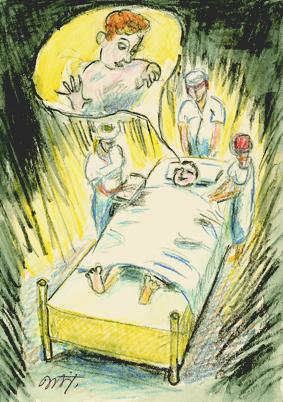
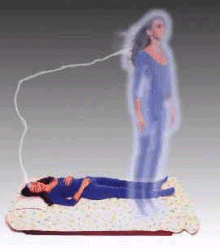
 |
Reincarnation, Life After Death, and Astral Travel |  |
 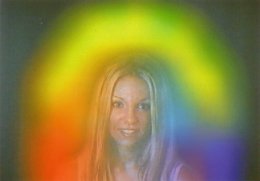 |
One major technique of pseudoscience is to borrow vague concepts from religious and occult or mystical traditions that are unfamiliar to Western man. These concepts can then be rephrased and twisted about so that their origins would be difficult for the average person to trace. The retreaded ideas, with accompanying worthless “techniques,” can then be peddled at high prices to the gullible. Unlike Western religions, which emphasize “salvation,” and joy in the next world, however miserable and insignificant you might be in this one, Eastern religions, at least as they are marketed in the West, tend to emphasize the development of new and preferably godlike powers in the individual— if not now, today, then next week after a few lessons. Mingled confusingly and inconsistently together in pseudosciences and pseudoreligions like Scientology, Eckankar, Avatar, Silva Mind Control aka Silva Method, etc., are Eastern concepts like yoga, meditation, reincarnation, and astral travel, woven into more traditional Western teachings such as that the individual somehow survives bodily death, mixed even further with incongruous Western religious traditions and even familiar Western pseudosciences such as ancient astronauts, ESP, Spiritualism, etc., etc. Among the most familiar and commonly-abused abused cultural traditions are those surrounding the frequently-confused words “soul” and “spirit.” |
The origin of various terms for the “immaterial part” of living creatures is complex, but briefly terms like spirit, anima [Latin], nephesh [Hebrew], prana [Hindu], and Chee [Chinese, usually mistransliterated as Ki, Qi, Ch'i, Qui, Chi, etc., etc., etc.] mean nothing more nor less than the warm breath of a living creature. On the other hand, the term soul, or psyche [Greek], seemed originally to refer to a little manniken who lived inside the head of every “intelligent” living thing, looking out of the creature's eyes as the inhabitant of a room might look out a window. In both cases, one is all-too-obviously dealing with a primitive, prescientific scenario to “explain” the difference between life and death.
The most familiar and popular pseudoscientific exploitation of such cultural and religious baggage is survival of bodily death via the individual's consciousness being somehow imprinted on a non-material something or other which leaves the body at death to go to some never-never-land or Elysium. Not quite so common in the West is the idea that the something reattaches to another body, so that the individual is in some sense “newly incarnated,” although of course unaware of his previous existence. This is the idea of reincarnation, or transmigration of souls, or metempsychosis. Least common of all, but still finding customers, is the idea that the immaterial something can leave and return to the body at will, at any time, without ill effects to the body. This is the notion of astral projection or astral travel. [How to distinguish between astral travel and “mere” clairvoyance is a question pseudoscientists don't seem concerned with.]
Dealing with the last first, it is important to distinguish between dreams and claims. Everyone has, at times, extraordinarily vivid or realistic dreams. These can include dreams of flying, dreams of meeting yourself or seeing yourself, dreams in which you have a bird's-eye viewpoint, detailed dreams of distant locations either well or poorly known to you, and so-called “movie” dreams in which you can see what is going on as if present, but none of the characters observed are aware of your existence (just as the actors in a film ignore the presence of the movie camera). These vivid dreams may make a stronger impression on the awakened dreamer than more ordinary dreams, but any experience whatsoever with the full variety of dreams leaves no room for doubt that such “lucid dreams” are just... dreams.
Such dreams should be carefully distinguished from the unsubstantiated claims of various individuals (examples are Ingo Swann, Gilbert N. Holloway, Stuart Harary) that they can leave their bodies at will and travel instantaneously to distant locations, seeing what is there and returning to describe it! Suffice it to say that NOBODY has ever scientifically demonstrated such an ability. The typical meaningless pseudoscience “experiment” is simply to ask the claimant to describe something that is on a shelf just above his head (the “experimenters” then obligingly go out of the room while the subject stands on tiptoe or a chair to see what's on the shelf so he can describe it as an astral observation to the easily-satisified “experimenters” when they return).
Pseudoscientific “studies” of life after death tend to involve two kinds of meaningless antics. First, there are the attempts to detect, weigh, photograph, or otherwise measure the soul or spirit, whatever those are. Such great moments of pseudoscience as Dr. J. L. W. P. Matla's measurement of the volume of a soul (53 liters!) in 1904, Dr. Duncan MacDougall's measurement of the weight of a soul (precisely 3/4 of an ounce!) in 1907, and Dr. R. A. Watter's observations of the souls of just deceased grasshoppers and baby chicks in a small cloud chamber (1931) are not taken very seriously, even by the most enthusiastic pseudoscientists. Far more popular, particularly since 1975, have been collections of anecdotes and unsubstantiated, unverifiable tales concerning what supposedly-unconscious hospital patients (and occasionally patients in coma or “clinically dead,” whatever that means) are supposed to remember about dreams or hallucinations while allegedly “close to death.” Note the patients are being asked to remember a mental state from a period of unconsciousness, about as naked a contradiction as exists in pseudoscience, despite the fact that pseudoscience is already very full of contradictions!
These stories are always taken at face value, never mind the fact that a person who is seriously ill, deeply unconscious, and perhaps dosed with a variety of drugs, medications, and painkillers is exceedingly unlikely to be able to remember anything whatsoever about even his periods of consciousness! The standard pseudoscience claim is that, taking the stories at face value, all patients describe very similar dreams, so that perhaps the supposed experience is in some sense “real” and not just a tale made up on the spot, or a dim, confused recollection of a drug-induced hallucination during a period of partial consciousness. Common features supposedly include: a feeling of great relief, great peace or profound relaxation; loud ringing or buzzing sounds; motion through a dark tunnel; “out-of-body” experiences like those of the vivid dreams mentioned above; viewing of fields of brilliant colors and lights; and a rapid scan of memories of one's past life. There seems little connection between such hallucinations and the traditional concept of life after death— for one thing, the people involved aren't and weren't dead! True bodily, organic death is irreversible; no one who has been through it is available for interview. The pseudoscientists love the phrase “clinical death,” which has little or no meaning and vaguely refers to unconsciousness with faltering breathing or heartbeat, or generally faint but present life-signs.
It is therefore more useful to compare the so-called near-death experiences to hallucinations due to drugs or anesthetics. It is found that in fact all the features allegedly common to “near-death” are found in hallucinations due to drugs, not only the usual hospital light anesthetics and pain-killers, but also various recreational drugs, plus more exotic substances such as phencyclidine and mescaline. Furthermore, many features are shared with ordinary light sleep in which dreams are mixed with authentic sensory inputs from the room in which one sleeps, as well as with the states of semi- or total unconsciousness produced by dissociative anesthetics such as nitrous oxide, ether, and ketamine. The “near-death” patient is at best semi-conscious, so that dreams and hallucinations are overlaid with confused sensory impressions of actual events such as conversations of doctors and nurses; changing room lights; being rolled down corridors; bells and warning buzzers, etc., etc. Many of the supposed authentic signatures of such an experience can be supplied by nothing more than keeping one's eyes closed for a long period. These states of partial awareness are interesting from a psychological point of view, but obviously totally irrelevant to the question of an individual's survival of organic death and decomposition. Being “near death” is, as typically used by pseudoscientists, as fuzzy, undefined and ambiguous a state as being “a little bit pregnant.”
The writer of these lines had the amazing experience of three major surgeries in the space of only 6 months. In the first of them, for 2 hours the writer's heart and lungs did not function; pumped, oxygenated blood was supplied by a trusty heart-lung machine. Alas, the writer (like the many thousands of others who have such surgery each and every week in the US!) has no memories whatsoever, of hallucinations or of anything else, from his three long periods of unconsciousness.
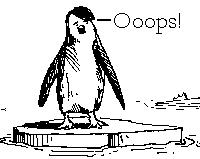 |
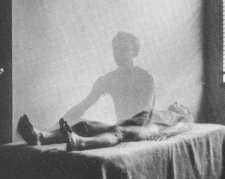 |
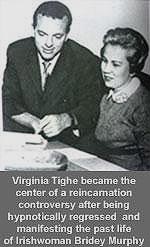 |
It is quite rare for there to be fewer than one or two books on the nonfiction best seller list that supposedly describe the afterlife, at any time. Such books can be written by a spirit medium or psychic who supposedly gleans the depressingly conventional and familiar information about the delights of Heaven from inhabitants of that realm with which he or she is supposedly in contact. More often, the books are based on a supposed experience of some hospital patient or accident victim, who suddenly and literally “went to heaven” (or, less often, “went to hell”) for a few moments before (perhaps unfortunately) returning to his or her rightful body. For the past few years (2011 - 2013), among the top-selling “nonfiction” books have been one described as by the appropriately-named Todd Burpo, Heaven is for Real. It is a ghost-written account of the temporary visit to heaven by Burpo's 3-year-old son(!), courtesy of a successful appendicitus operation! Sharing space on the current list is 90 Minutes in Heaven, another ghost-written epic by Don Piper. He went to heaven when frightened badly during an auto mishap. Since there is no authentic Biblical account of an afterlife to use as a resource, writers and their ghost-writers have to fall back entirely upon popular fantasy fiction and cliche to flesh out their stories. That guarantees readers will learn nothing disturbing or novel from such accounts, and also guarantees at least a short period as a best-seller.
A belief in reincarnation is common to many different cultures and religions, being found among the Australian aborigines, in Hinduism, in Buddhism, among the Celts, Druids, and Greeks of 2,000 years ago, and in certain forms of Jewish mysticism. In its most extreme form, the idea is that there are a fixed number of eternal souls in the universe, leaping from body to body like ethereal grasshoppers, but never being created or destroyed. This idea is obviously difficult to reconcile with the fantastic growth of the human population of the earth. The global population has grown from about 10 million persons 10,000 years ago, to about 100 million during the Renaissance, exploding since 1600 to the present staggering level of more than 7 billion. Just the increase in the population during the period 1950-1970 was twice the total world population in 1650, for example. Then there's the small problem that 9 out of every 10 living creatures on earth is an insect. There's relatively little chance of a human being reincarnated as another human.
More difficult questions may also be raised. For instance, how can the “soul” come to share the human brain's memories, personality, etc? And if it does come to share the memories and personality of its host, why does it not always carry them to its new host after the death of the old one? This point is the one most often first blunted, and then exploited, by pseudoscientists and occultists, who for a large enough fee will happily teach anyone to “remember” his or her amazing, stupendous past lives.
One of the most dramatic incidents in the last century's history of pseudoscience was the Bridey Murphy case, the subject of a best-selling book published in 1956. The story is that in 1952, Pueblo, Colorado, businessman Morey Bernstein hypnotized housewife Virginia Tighe (called “Ruth Simmons” in the book) and asked her to recall one of her past lives. She told a remarkably detailed story of her life in Cork and Belfast, Ireland, during the late 18th and early 19th centuries, as Bridey Murphy, later Bridey McCarthy. She spoke in a rich Irish brogue and even danced a vigorous jig on demand. But when reporters from the Chicago Daily News and the Denver Post were sent to Ireland to check out the details, they found that none of the persons, places, addresses, businesses, etc., mentioned by Virginia Tighe had ever existed. Much more fruitful was a visit by reporters to Virginia Tighe's old neighborhood in Chicago. Speaking to childhood friends of Virginia, they were able to show that all of the incidents so vividly described by Bridey as having happened to her during childhood in Ireland had in fact happened to Virginia in Chicago, and were among her standard, favorite stories of childhood, which she had told often to friends. They also found Mrs. Anthony Corkel, an Irish immigrant who had lived across from Virginia and with whom Virginia had spent a good deal of time hearing stories of the old days in Ireland. Mrs. Corkel's maiden name was Bridie Murphy!
It has been established over and over that a person who is “hypnotized” (whatever that means) and then is asked to tell a story about any subject (even his or her experiences as a 27-armed Martian spideroid during the 12th century war against the Brigands of the Moon) will do so effortlessly. Thus, by asking leading questions and dropping hints, the “hypnotist” can elicit any story whatsoever that is desired. In every known case, the details are found to be pretty much identical to those contained in a popular historical novel, or even more likely to incidents in movies and TV series with historical themes, or to stories provided by relatives or friends.
|
Books on reincarnation since Bridey have learned the lesson that stories must be quoted or summarized only very vaguely, and with no incriminating personal details that anyone can check up on. A typical safe story would be, “Oh, yes, I remember being Tutankhamen's favorite charioteer. Yep, yep. I drove horses around a lot for old Tutankhamen.” There is no way to check such a story. If the name of Tutankhamen's charioteer is given in reference books, the subject could just as easily have read it there as the researcher. If the name is not mentioned, there is no way to check it anyhow. In fact, the common source for such names is historical novels, which contain names and word-portraits of many thousands of completely fictitious characters who have been inserted into semi-historical contexts. Properly phrased, the recovered “memory” should sound realistic but be completely unverifiable! |
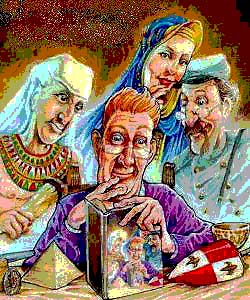 |
 |
Again, very vivid dreams are often interpreted by occultists and pseudoscientists as memories of past lives (confusing, if they are also to be examples of astral projection and also of afterlife experiences). Maybe reincarnation memories are not memories at all but involve astral projection to the past! |
Reincarnation is a permanently popular subject; no matter how obscure you are in your present life, you can always remember some past glories. Past-life tale-tellers always seem to have been someone important, despite the enormous ratio of peasants to nobles during most of human history. In May 1983, semi-retired actress Shirley MacLaine proudly announced that her memories of past lives stretched all the way back to the mythical lost continent of Atlantis. Maybe even further. Back then she was a queen. You can be one, too; there seems to be, in fact, nothing to stop everyone on earth from “remembering” having been the exact same person— say, Queen Cleopatra or Queen Elizabeth the First! It's also more than a bit strange that most people in the US who profess to believe in reincarnation also profess to believe in a conventional afterlife with the souls of the dead strumming harps blissfully in heaven... strange, because they don't seem to spot the obvious and total contradiction!
As astronomer and science popularizer Carl Sagan wrote, “There are many ideas which are charming if true, which would be fun to believe in, which are a delight to think about: reincarnation; the philosopher's stone to turn base metals into gold; the search for long or possibly indefinitely extended lifetimes; psychokinesis, the ability to move inanimate objects by thinking about them; precognition, the ability to foresee the future; telepathy, the ability to read someone else's mind; time travel; leaving one's body (the literal meaning of ecstasy); becoming one with the universe.... But precisely because these ideas have charm, exactly because they are of deep emotional significance to us, they are the ideas we must examine most critically. We must consider them with the greatest skepticism, and examine in the greatest detail the evidence relevant to them. Where we have an emotional stake in an idea, we are most likely to deceive ourselves.” Nothing which has so far been said or written or “demonstrated” by people concerning the topics of reincarnation, life after death, or astral travel amounts to anything other than transparently childish self-deception.
FOR FURTHER READING—
Links:
Acknowledgments: Dr. Rory Coker, Professor of Physics at the University of Texas at Austin, is the author of this fact sheet. The International Cultic Studies Association (formerly American Family Foundation), a professional research and educational organization concerned about the harmful effects of cultic and related involvements, prints and helps distribute these fact sheets. Because these pages seek to stimulate critical thinking, rather than advance a particular point of view, opinions expressed are those of the authors. These fact sheets may be copied for educational purposes, but they may not be reproduced for resale.
 |
 “Alas, poor Yorick! I knew him, Horatio: a fellow of infinite jest, of most excellent fancy. He hath borne me on his back a thousand times; and now, how abhorred in my imagination it is! my gorge rises at it. Here hung those lips that I have kissed I know not how oft. Where be your gibes now; your gambols, your songs? your flashes of merriment, that were wont to set the table on a roar? Not one now, to mock your own grinning? Quite chap-fallen? Now get you to my lady's chamber, and tell her, let her paint an inch thick, to this favour she must come.” (Shakespeare, Hamlet, 5.1.201) And by the way, what was Hamlet's ghost?  |
 |
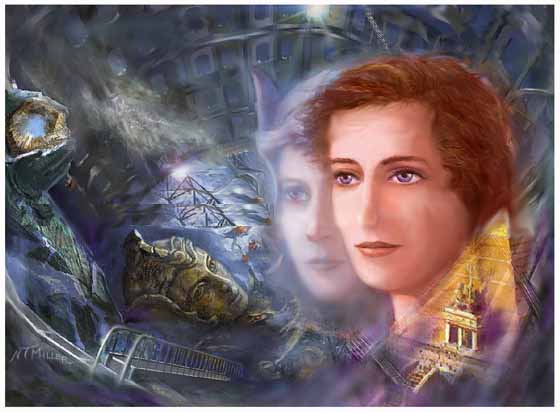 |